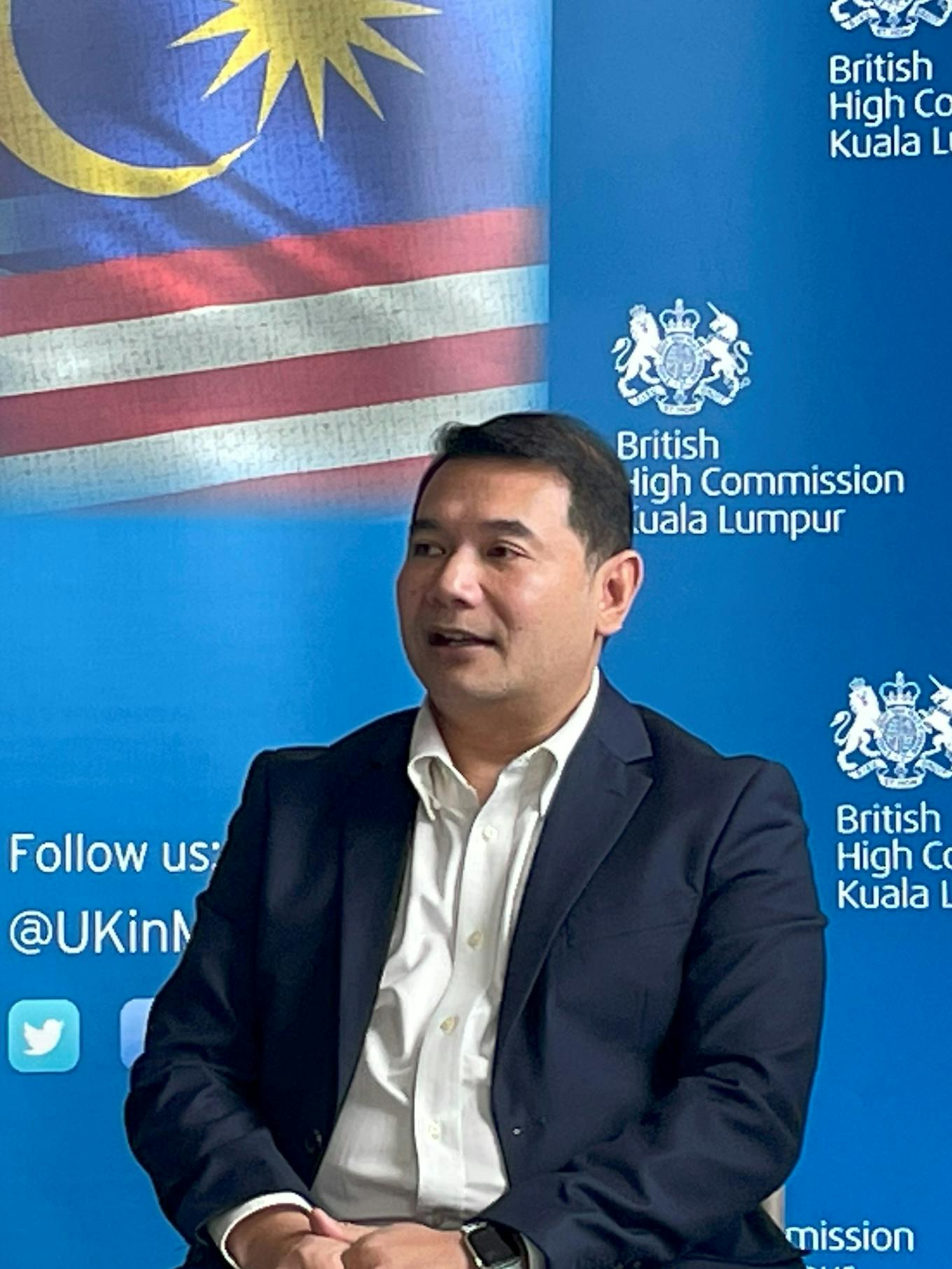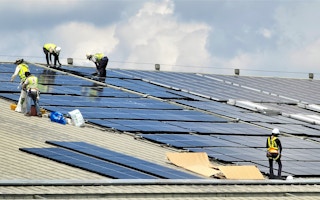The Malaysian government has lifted its ban on renewable energy exports, a much-anticipated move that experts say will boost the local renewables sector and benefit neighbouring Singapore.
In a slew of announcements on Malaysia’s renewable energy policies, economy minister Rafizi Ramli said that the lifting of the renewable energy export ban was agreed at a cabinet meeting on 3 May.
At the same meeting, the government also reached a consensus on a targeted renewable energy mix of 70 per cent by 2050, which would require an eleven-fold increase in renewable energy capacity from current capacity, Rafizi said.
Malaysia’s previous target to achieve a 40 per cent renewable energy mix by 2035 was announced in late 2021.
Although details on the renewable energy trade mechanism have yet to be announced, Rafizi said that more details on the additional layers of policy frameworks and incentives will be unveiled in the coming months.
“I’m not big on going with a big announcement and big policy framework and then waiting for [the industry and society] to pick [them] up. We’d rather do it piece by piece,” he said at a press conference just before the announcement.
“But what I think you will be able to see is that there is a consistency in focus on the pace and implementation of energy transition-related projects, incentives, frameworks and an easing out of regulations,” he said.
Rafizi was appointed economy minister in November last year following the appointment of Anwar Ibrahim as Malaysia’s tenth prime minister. While the energy sector is governed by the ministry of natural resources, environment and climate change (NRECC), Rafizi said some 60 per cent of his time as minister has been spent working on energy transition-related matters.
NRECC minister Nik Nazmi Nik Ahmad had previously said the two ministries were working together to review the renewable energy export ban, alongside the trade ministry.
Experts expect that the lifting of the export ban on renewable energy, which had been in place since October 2021 under a previous administration, will spur the power sector to boost investments into renewable energy.
“The removal of the export ban provides the opportunity to Malaysian renewable energy providers to generate more revenue, over and above the market rates from the existing power purchase agreement system,” said Nur Farah Syifaa Mohamed, equity research analyst at Maybank Investment Bank. “We expect this will provide another avenue of growth for renewable energy players.”
The government’s latest initiatives were also a welcome move to free up market-driven development of renewable energy, which will help accelerate energy transition momentum, said Peter Godfrey, managing director for Asia Pacific at the Energy Institute in Singapore. “It will also help empower organisations focused on renewable energy development to look more closely at the development of microgrids and other off-grid energy solutions,” he told Eco-Business.
In line with its increased targets, the Malaysian government also green-lit the development of self-contained renewable energy systems. This will enable the trade of renewable energy by private sector participants on a “willing buyer, willing seller basis”, said Rafizi.

Malaysia’s economy minister Rafizi Ramli spoke to reporters at an event on clean growth hosted by the United Kingdom High Commission in Kuala Lumpur. Image: Samantha Ho/ Eco-Business
“[The introduction of] self-contained systems will see the development of localised [solar panels] installed on rooftops, as well as floating-type solar solutions to be installed on old mines, water harvesting bodies and dams,” said Nirinder Singh Johl, founder and chief executive officer of Malaysian energy trading platform Asia CarbonX Change.
Prior to the announcement, quotas for renewable energy were set by national grid operator Tenaga Nasional under the Net Energy Metering scheme.
Malaysia has also long been reliant on fossil fuel and revenue from oil and gas-related activities, which have accounted for more than 15 per cent of government income over the past five years. But there is a “coming together and acceptance” that Malaysia must gradually reduce its dependence on fossil fuels, said Rafizi at the press conference. He pointed out that among the current administration’s first moves was to gradually reform the blanket electricity subsidy for industry users, although he stopped short of commenting on widespread petrol subsidies currently in place.
The development of the renewables sector is now estimated to require investments of up 637 billion ringgit (US$143 billion), said Rafizi. This would include funding needed for the development of new renewable energy generation sources, strengthening grid infrastructure, integrating energy storage systems and covering the costs of operating the grid, he said.
A boon to Singapore’s clean energy goals
The lifting of the renewable energy export ban was well received in Singapore, whose Energy Market Authority has targeted for 30 per cent of its energy supply to comprise renewable energy imports by 2035. Given the bans on renewable energy exports in place by Indonesia and until yesterday, Malaysia, the island country has had to import hydropower from further north in Laos, and to go as far as Australia for solar power, possibly through over 4,000 kilometres of undersea cables.
“Malaysia’s lifting of its renewable export ban is good news for Singapore and its renewable energy targets,” said Christophe Inglin at managing director at specialist renewable energy installer Energetix.
His views were echoed by Dr Victor Nian, chief executive officer & co-founder of the Centre for Strategic Energy and Resources, an independent think tank headquartered in Singapore. “This is a positive move, especially in the spirit of the Asean power grid initiative, in which we hope to see increased regional cooperation in cross-border energy trade,” he told Eco-Business. Indonesia is also drafting regulations that could see it reopening cross-border trade of renewable energy.
Challenges stand out amidst the opportunities, however. “Direct and indirect subsidies still exist within conventional energy value-chains. These need to be removed in favour of more positive support to renewable energy development,” said Energy Institute’s Godfrey.
Instead of focusing solely on the export of renewable energy to Singapore, Malaysians should take into account that renewable energy is being sold at affordable rates from other countries in the region such as renewable energy certificates from Vietnam being sold below US$1, said Asia CarbonX Change’s Johl.
There are inter-country regulatory challenges, a lack of adequate utility infrastructure and market risks to consider but it is a challenge that Asean must rise up to in order to improve its electricity connectivity, he said.

















